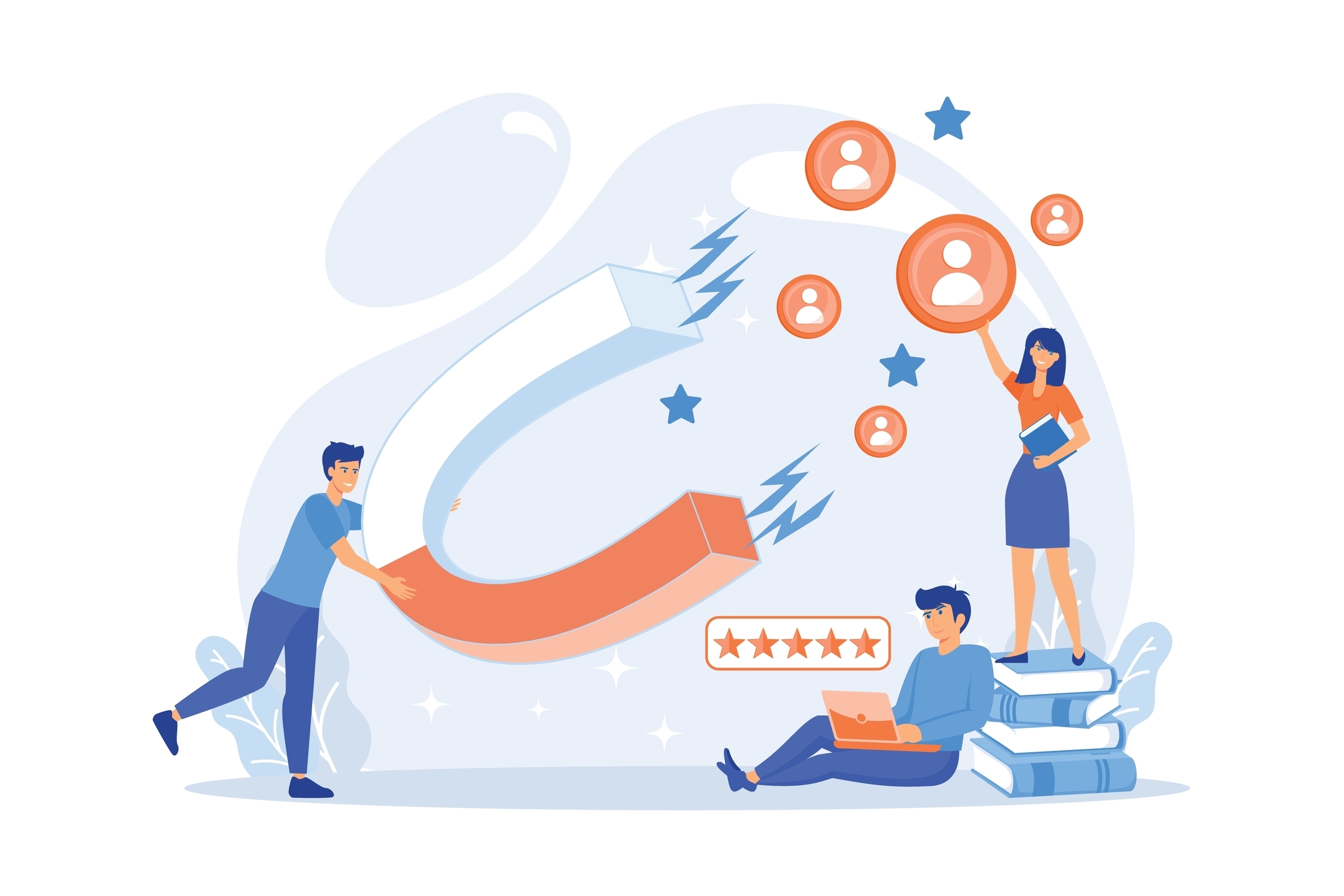Customer retention is important for any business. It can be more expensive to keep existing customers than recruit new ones.
We’ll give you all the reasons why your business should focus on customer retention.
Let’s get started.

What is customer retention?
Customer retention is getting repeat purchases from existing customers. Ideally, the average retention rate for a small business is 20% and for ecommerce owners, it’s around 35%.
In a perfect world, businesses would have a 100% retention rate, but this is near impossible. Customers have a number of reasons to shop with some being location, convenience and accessibility.
However, there are strategies businesses can use to increase their retention rate and continue to have existing customers.
Some of those strategies:
- Improving customer support
- Creating a loyalty program
- Using a referral strategy
- Offering personalized experience
To learn more about personalization, read our article “Define personalization: How to use it in marketing“.
Why is customer retention important?
Customer retention needs to be part of a business’s overall strategy. It’s 5 times more costly to acquire a new customer than an existing customer.
Furthermore, the success rate of selling to repeat customers is 60-70% while the success rate to new customers is 5-20%. Businesses have to consider the importance of customer retention.
Here are some of the main reasons.
Cost-effective
With customer retention being 5 times cheaper than recruiting new customers, the cost savings alone are a big reason to start implementing strategies.
The overall goal is to increase the lifetime value of the customer. When customers shop more at your store, they’ll also be spending more.
This is because they have become familiar with your brand and your products.
The average repeat customer spends 67% more in the 31st to 36th month of their relationship compared to the beginning interactions.

Word of mouth
Repeat customers are your best marketers. If customers are pleased with your products or service they will easily refer others to your business.
Word of mouth is a powerful tool because the recommendation is coming from someone that person already knows. People are more likely to trust a friend or family member over an advertisement.
By getting customers to talk about your products you’re getting your business name out there in a natural and authentic way.
Feedback
Customers that make repeat purchases can provide valuable feedback. These customers have visited your store, digitally or in person and they’ve used your products a number of times.
By asking for feedback you can be aware of areas of improvement. This information can only help your business grow.
Often times owners can be overlooking something. Maybe it’s with a product design or website issue.
You can use the information to make the changes you need, so new customers will also want to make repeat purchases. It’s great to get real feedback from customers that care about your business.
How to calculate your customer retention rate?
Figuring out your customer retention rate can give you a baseline before you start implementing retention strategies.
Here’s a quick calculation – [(E-N)S] x100 = CRR
Steps to calculating customer retention rate:
- Identify a time frame.
- Collect the number of existing customers at the start of the time frame. This we’ll be “S”.
- Collect the total of the number of customers at the end of the time frame. This will be “E”.
- Determine the number of new customers within the time frame. This will be “N.”
Let’s put this as an example.
A cleaning company has 60 customers at the start of the month. In that same month, you lose 10 customers but gain 15 new customers.
- Number of customers at the end of the period = 65
- Number of customers at the start of the period = 60
[(65-15)/ 60]x100 = 83% retention rate. The cleaning company has an 83% retention rate.

Customer retention strategies
Customer retention is crucial for the long-term success of any business. Here are some effective strategies that can help you retain your customers:
Provide excellent customer service
Good customer service is essential for customer retention. Make sure that your customer service team is responsive, friendly, and knowledgeable.
Build customer loyalty programs
Create loyalty programs that incentivize customers to continue doing business with you. This can include rewards, discounts, or exclusive access to special events.
Personalize the customer experience
Use customer data to personalize the customer experience. This can include personalized recommendations, targeted marketing, and customized products or services.
Offer exceptional value
Ensure that your products or services offer exceptional value for your customers. This will encourage them to continue doing business with you.
Resolve issues quickly
Address customer complaints and concerns promptly and effectively. This will show your customers that you value their business and are committed to their satisfaction.
Use a CRM to boost retention
A successful CRM strategy will help increase customer retention. Good CRM software can overall help the customer journey. It’s not just about collecting and analyzing data with a CRM system.
It can be used to understand your customers better and provide a better experience. The improved experience can ensure your customers come back for repeat visits time and time again.
By collecting and storing customer data, tracking customer interactions, creating targeted marketing campaigns, implementing loyalty programs, and providing personalized customer service, CRM software can be a powerful tool for improving customer retention.
Here are some ways to use CRM software for customer retention:

Collect and store data
Use your CRM software to collect and store customer data, including contact information, purchase history, and customer interactions.
This data can help you better understand your customers and tailor your marketing and sales efforts to their needs.
Track customer interactions
Use your CRM software to track customer interactions, such as phone calls, emails, and support requests.
This can help you identify patterns and trends in customer behavior, as well as provide better customer service by having access to the customer’s history with your business.
Create target marketing campaigns
Use your CRM software to create targeted marketing campaigns based on customer data.
For example, you could create a campaign targeting customers who have not made a purchase in a while, or offer a discount to customers who have recently made a purchase.
Implement loyalty programs
Use your CRM software to implement loyalty programs that reward customers for their repeat business.
For example, you could offer discounts, special offers, or other incentives to customers who have made multiple purchases or have been with your business for a certain period of time.
Do loyalty programs work? Check out our article “Are customer loyalty programs effective?“

